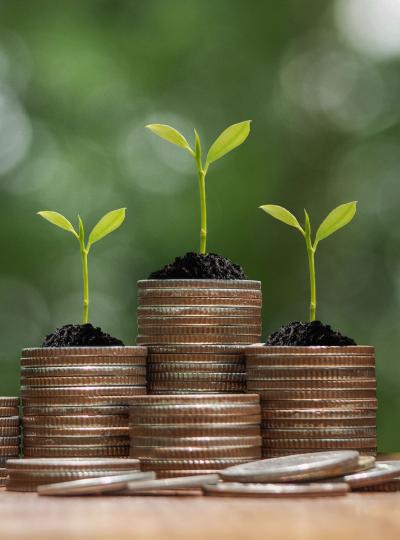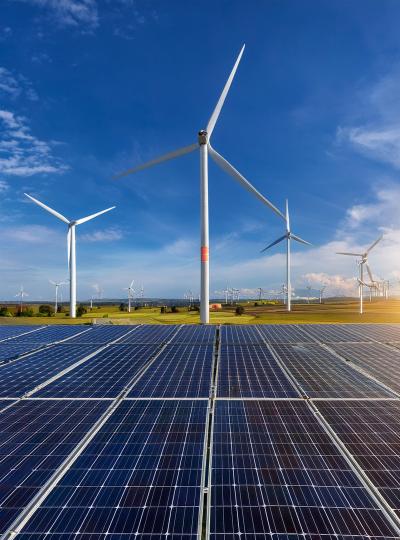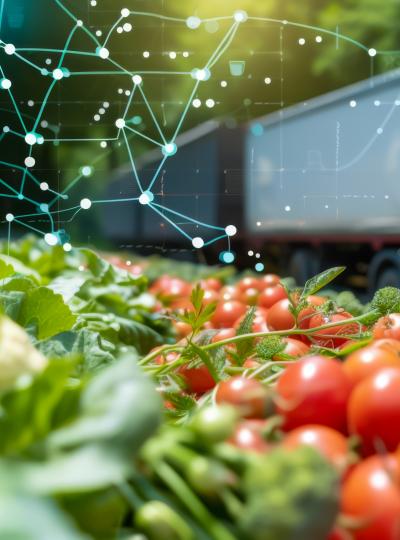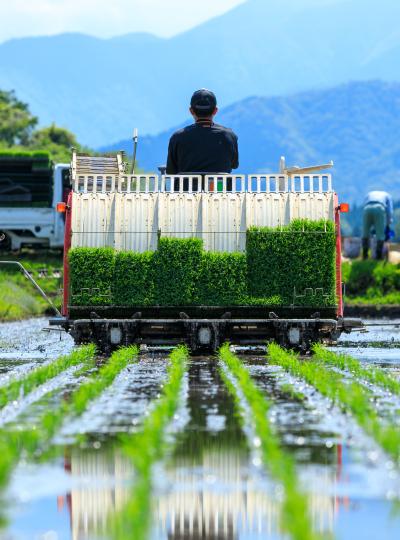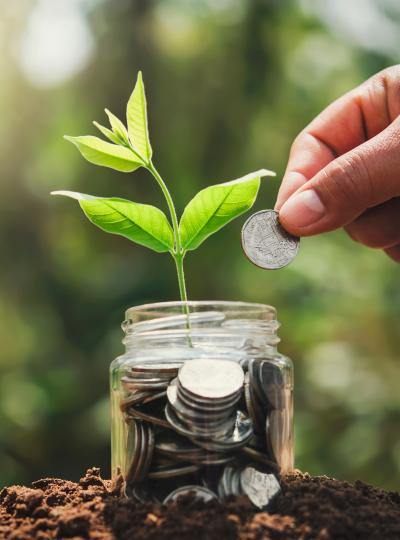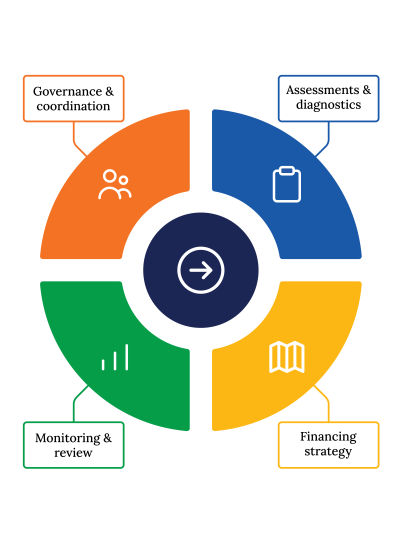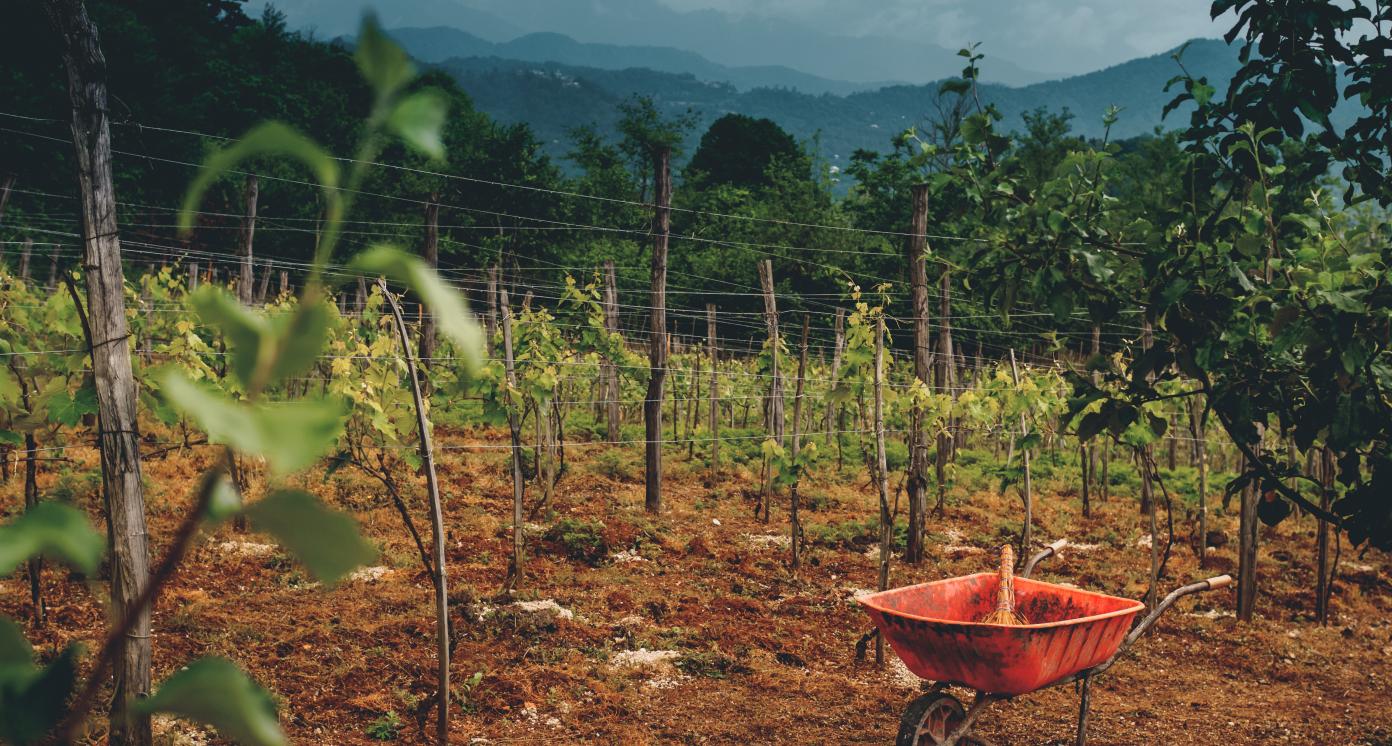Export-Oriented Wine Grape Farming with Geographical Indications
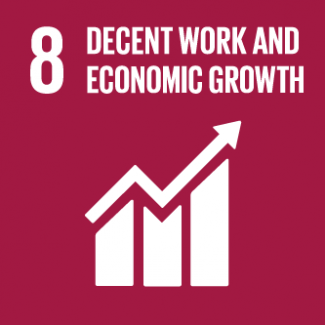
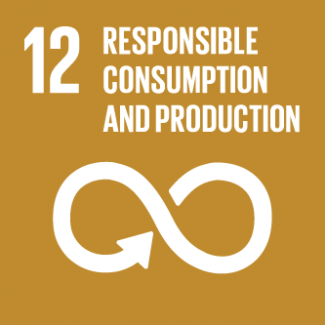
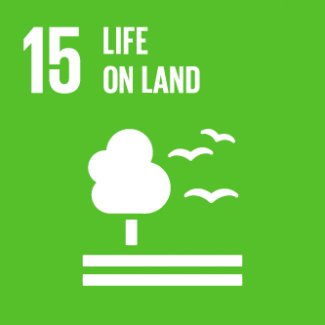
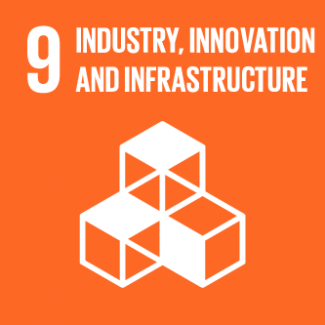
Business Model Description
Register Geographical Indications (GIs) and establish organic-certified vineyards to supply premium wineries through direct export contracts. Focus on land consolidation, sustainable viticulture, and modern vineyard restructuring. Invest in organic certification, premium branding, and value-added processing (organic grape juice, dried grapes) to enhance export competitiveness.
Expected Impact
Export-oriented wine grape farming transforms the wine sector by promoting organic-certified, premium viticulture, and enhancing competitiveness.
How is this information gathered?
Investment opportunities with potential to contribute to sustainable development are based on country-level SDG Investor Maps.
Disclaimer
UNDP, the Private Finance for the SDGs, and their affiliates (collectively “UNDP”) do not seek or solicit investment for programmes, projects, or opportunities described on this site (collectively “Programmes”) or any other Programmes, and nothing on this page should constitute a solicitation for investment. The actors listed on this site are not partners of UNDP, and their inclusion should not be construed as an endorsement or recommendation by UNDP for any relationship or investment.
The descriptions on this page are provided for informational purposes only. Only companies and enterprises that appear under the case study tab have been validated and vetted through UNDP programmes such as the Growth Stage Impact Ventures (GSIV), Business Call to Action (BCtA), or through other UN agencies. Even then, under no circumstances should their appearance on this website be construed as an endorsement for any relationship or investment. UNDP assumes no liability for investment losses directly or indirectly resulting from recommendations made, implied, or inferred by its research. Likewise, UNDP assumes no claim to investment gains directly or indirectly resulting from trading profits, investment management, or advisory fees obtained by following investment recommendations made, implied, or inferred by its research.
Investment involves risk, and all investments should be made with the supervision of a professional investment manager or advisor. The materials on the website are not an offer to sell or a solicitation of an offer to buy any investment, security, or commodity, nor shall any security be offered or sold to any person, in any jurisdiction in which such offer would be unlawful under the securities laws of such jurisdiction.
Country & Regions
- Republic of North Macedonia: Vardar
- Republic of North Macedonia: Southeastern
- Republic of North Macedonia: Skopje
- Republic of North Macedonia: Eastern
Sector Classification
Food and Beverage
Development need
Country's agricultural sector requires modernization and sustainable practices. It needs integrated support for adopting eco-friendly technologies, improving resource efficiency, and scaling organic production. Emphasis should be placed on reducing chemical use, enhancing biodiversity, and empowering women farmers to lead in climate-smart practices . (1, 2)
Policy priority
Strategy for Viticulture and Winemaking 2023-2033 prioritizes vineyard replanting, premiumization, and market diversification, aligning with the goals of and for export-driven agribusiness growth. (1,3,4,5,6)
Gender inequalities and marginalization issues
Despite comprising 39% of the agricultural workforce, women manage less than 10% of agricultural holdings, highlighting a significant gap. Traditional norms often relegate women to unpaid family labor, limiting their access to land ownership, resources, and decision-making roles. Additionally, women have restricted access to education, information, healthcare, and public services, exacerbating their social exclusion and economic vulnerability. (46)
Investment opportunities introduction
Food and beverage sector offers broad investment opportunities in processing, packaging, and value-added production. The country has seen increased interest from international partners, with investments targeting modernization, supply chain integration, and product diversification (1, 7)
Key bottlenecks introduction
Outdated infrastructure, limited access to finance, and gaps in quality standards and certification. These challenges hinder competitiveness, scalability, and integration into high-value export markets, especially for small producers and rural enterprises. (1, 2)
Beverages
Development need
The Republic of North Macedonia’s beverage sector, particularly wine, needs to transition from bulk exports to premium, value-added products. Introducing Geographical Indications (GIs) and organic certification can increase global competitiveness and align with shifting consumer preferences for sustainable, high-quality beverages.
Policy priority
NDS 2024-2044, Smart Specialization Strategy and National Strategy for Viticulture and Winemaking 2023-2033 prioritize high-value wine production, export market expansion, and sustainable farming practices. Country's main policy is to support export growth and improve competitiveness of the wine sector. (1, 2, 3)
Gender inequalities and marginalization issues
Women are underrepresented in vineyard management and high-level decision-making in the wine industry. Expanding training programs, financial support, and entrepreneurship opportunities for women and small-scale producers can promote inclusivity and sectoral growth (43, 44, 46)
Investment opportunities introduction
Increasing demand for organic and sustainably produced beverages presents opportunities for investment in organic viticulture and premium winemaking, and international market positioning. Expanding production capacity, certification infrastructure, and direct export contracts with boutique wineries can drive long-term profitability. (7, 8)
Key bottlenecks introduction
Key challenges include fragmented vineyard ownership, slow adoption of organic certification, limited access to financing for small producers, and vulnerability to climate variability. Strengthening financial and financial incentives, technological modernization, and market access strategies will be critical for sectoral expansion. (9)
Alcoholic Beverages
Pipeline Opportunity
Export-Oriented Wine Grape Farming with Geographical Indications
Register Geographical Indications (GIs) and establish organic-certified vineyards to supply premium wineries through direct export contracts. Focus on land consolidation, sustainable viticulture, and modern vineyard restructuring. Invest in organic certification, premium branding, and value-added processing (organic grape juice, dried grapes) to enhance export competitiveness.
Business Case
Market Size and Environment
USD 50 million - USD 100 million
5% - 10%
The wine market in North Macedonia is projected to reach $297.8 million in 2025. In 2023, North Macedonia exported $63.8 million worth of wine, positioning it as the 27th largest wine exporter globally. (13, 14)
The country's wine market is expected to experience a CAGR of nearly 4.8% through 2029, with an incremental increase of $178.5 million. (16)
Indicative Return
10% - 15%
> 25%
Organic-certified wine grapes command 30-50% higher prices than conventional grapes, enhancing profitability. (16)
Comparable organic vineyard investments in Southern Europe report ROI of 10-12% p.a., aligning with expert projections for North Macedonia’s premium wine segment. (17)
Investment Timeframe
Medium Term (5–10 years)
Newly planted vineyards require 3-4 years to reach full production, impacting initial revenue streams. (19)
The transition to organic viticulture takes at least 3 years for full certification, delaying access to premium pricing. (19)
Establishing Geographical Indications and securing premium export contracts typically takes 5+ years. (47, 48)
Ticket Size
USD 1 million - USD 10 million
Market Risks & Scale Obstacles
Capital - CapEx Intensive
Market - Highly Regulated
Business - Supply Chain Constraints
Impact Case
Sustainable Development Need
Export-Oriented Wine Grape Farming reduces chemical pesticide and fertilizer use through organic farming, preserving soil health, biodiversity, and water quality while mitigating climate change impacts. (49, 50, 51, 52)
Organic-certified vineyards create jobs, increase farmer incomes, and promote sustainable agribusiness, supporting rural communities and preventing depopulation. (42)
When harmful chemicals in grape production are eliminated, organic-certified wine grapes ensure safer, high-quality wine products for consumers while promoting sustainable consumption practices (49, 50, 51, 52)
Gender & Marginalisation
Women are underrepresented in vineyard management and wine production. Targeted support, training, and financing can enhance their role in the sector. (43)
The wine sector can provide stable jobs for marginalized rural populations, particularly young people and women. It will reduce the need for immigration and foster local economic growth. (43)
Expected Development Outcome
Export-Oriented Wine Grape Farming promotes organic viticulture, reducing pesticide use, improving soil health, and enhancing biodiversity while aligning with EU sustainability goals.
Expanding organic-certified vineyards increases farmer incomes, supports smallholder integration into high-value markets, and creates stable rural jobs. (42)
Organic certification ensures safer, chemical-free wine production, benefiting both producers and consumers while promoting sustainable consumption practices. (3)
Gender & Marginalisation
Targeted training and financial incentives encourage more women to engage in vineyard management, winemaking, and agribusiness leadership roles. (43)
Expanding organic viticulture provides stable employment opportunities for marginalized groups, including rural youth and women, reducing migration and economic disparities. (3)
Primary SDGs addressed

8.2.1 Annual growth rate of real GDP per employed person
Annual growth rate of 3%. (45)
Annual growth rate is targeted to reach 4.7%, in line with the National Development Strategy 2024-2044. (1)

12.2.2 Domestic material consumption
In 2019, domestic material consumption was 8.6 t per capita. (27)
Secondary SDGs addressed


Directly impacted stakeholders
People
Gender inequality and/or marginalization
Planet
Corporates
Public sector
Indirectly impacted stakeholders
People
Gender inequality and/or marginalization
Planet
Corporates
Public sector
Outcome Risks
Increased water demand for organic viticulture may reduce resources in drought-prone parts, leading to potential conflicts over water use among farmers and local communities.
The high costs of organic certification and vineyard conversion may exclude small-scale farmers, leading to market concentration among larger producers and reducing equitable industry participation.
Seasonal labor demand in vineyards may lead to unstable employment conditions, creating income insecurity for rural workers and increasing reliance on temporary labor.
Gender inequality and/or marginalization risk: Without targeted inclusion policies, women and smallholder farmers may face barriers in accessing financing, training, and leadership roles.
Impact Risks
If organic certification adoption is slow, conventional farming practices may persist, limiting the expected reduction in pesticide use and environmental benefits.
Limited access to financing for small-scale farmers may slow vineyard modernization, reducing the sector’s ability to scale organic viticulture and meet export demand.
If country's organic wine sector fails to differentiate itself in global markets, price competition from larger wine-producing countries may undermine profitability.
Increased climate variability (droughts, temperature fluctuations) may reduce grape yields, affecting the long-term sustainability and profitability of organic vineyards. (19)
Gender inequality and/or marginalization risk: Without targeted support, women and smallholder farmers would struggle to compete with larger enterprises, limiting their participation
Impact Classification
What
Export-Oriented Wine Grape Farming with Geographical Indications generates positive outcomes by promoting organic viticulture, rural employment, and export competitiveness.
Who
The primary beneficiaries include smallholder farmers, vineyard workers, and women in agribusiness, who face structural barriers to financing and market access.
Risk
Impact realization faces challenges from climate variability, slow certification uptake, financial barriers for small producers, and trade dependency.
Contribution
Without this initiative, North Macedonia’s wine sector would remain heavily dependent on bulk wine exports with limited value addition.
How Much
Expected employment growth includes few thousands of rural jobs, with 30-50% price premiums for organic grapes, improving farmer livelihoods and sustainability (44)
Impact Thesis
Export-oriented wine grape farming transforms the wine sector by promoting organic-certified, premium viticulture, and enhancing competitiveness.
Enabling Environment
Policy Environment
The National Development Strategy 2022-2024 prioritizes agribusiness modernization, export diversification, and sustainable agriculture, supporting investment in organic-certified viticulture. (1)
The Smart Specialization Strategy identifies wine production and agribusiness as key sectors for innovation and export growth, emphasizing organic certification, technological modernization, and value-added processing to strengthen competitiveness. (2)
The strategy on viticulture and winemaking focuses on vineyard modernization, Geographical Indications, organic certification, and export market expansion, aligning with the business model's premiumization strategy. (3)
The Export Promotion Strategy also aims to enhance country's presence by facilitating direct export contracts, branding initiatives, and streamlined certification for premium wine exports. (5)
Financial Environment
Financial incentives: Even though the wine sector can rely solely on commercial financing, there is a possibility for micro, small and medium-sized enterprises to apply for subsidized loans from the Development Bank of North Macedonia. (28)
Fiscal incentives: There is a 0% excise tax on wine sales (Art. 58 of Law of Excise Taxes). Direct payments for financial support are above 12,000 MKD for one hectare under vineyards, The amount of additional direct payments is >28,000 MKD per hectare, or above 48,000 MKD per hectare, for family farms. (9)
Regulatory Environment
The Law on Wine regulates quality standards, production practices, and Geographical Indication labeling, which are essential for enhancing the competitiveness and export potential of wine grape farming. (4)
Law on Excise Taxes provides for a 0% excise tax on wines to encourage the wine sector growth. (6)
The Law on Organic Agricultural Production sets the legal framework for certification, labeling, and compliance, enabling organic wine grape farmers in North Macedonia to access premium export markets and meet international standards. (7)
The Law on Agriculture and Rural Development establishes the framework for planning, supporting, and regulating agricultural activities, including measures that enhance the competitiveness of export-oriented sectors like wine grape farming. (8)
The regulation on detailed criteria for direct payments to agricultural producers of grapes stipulates the criteria for eligibility and amount of financial support for wine producers. (9)
Marketplace Participants
Private Sector
Bovin, Tikveš, Kamnik, Stobi, Chateau Sopot are leading wineries investing in premium, organic, and export-driven wine production in North Macedonia
Government
Government: Ministry of Agriculture, Forestry, and Water, State Inspectorate for Agriculture, Agency for Financial Support to Agriculture and Rural Development
Multilaterals
The European Union (IPARD 3 2021-2027),EBRD provide funding, technical assistance, and policy alignment for sustainable viticulture and organic certification.
Non-Profit
Slow Food Macedonia and the Wine Association of North Macedonia promote sustainable viticulture, organic practices, and Geographical Indications to enhance market access.
Target Locations
Republic of North Macedonia: Vardar
Republic of North Macedonia: Southeastern
Republic of North Macedonia: Skopje
Republic of North Macedonia: Eastern
References
- ("1) National Development Strategy 2024-2044 "
- (2) Smart Specialization Strategy of the Government of North Macedonia
- (3) National Strategy for Viticulture and Winemaking 2023-2033
- (4) Law on Wine (March 24th, 2024)
- (5) Export Promotion Strategy, Government of North Macedonia, 2024. "6) Law on Excise Taxes (“Official Gazette"" no. 108/19, 143/19, 225/19 and 275/19)"
- (7) Law on Organic Agricultural Production (https://diz.gov.mk/wp-content/uploads/2021/01/%D0%97%D0%90%D0%9A%D0%9E%D0%9D-%D0%97%D0%90-%D0%9E%D0%A0%D0%93%D0%90%D0%9D%D0%A1%D0%9A%D0%9E-%D0%97%D0%95%D0%9C%D0%88%D0%9E%D0%94%D0%95%D0%9B%D0%A1%D0%9A%D0%9E-%D0%9F%D0%A0%D0%9E%D0%98%D0%97%D0%92%D0%9E%D0%94%D0%A1%D0%A2%D0%92%D0%9E.pdf)
- (8) Law on Agriculture and Rural Development („Official Gazette“ no. 49/10, 53/11, 126/12, 15/13, 69/13, 106/13, 177/14, 25/15, 73/15, 83/15, 154/15, 1/16, 53/16, 120/16, 163/16, 74/17, 83/18, 27/19, 152/19, 244/19, 275/19, 110/21, 123/22, 65/23, 218/24)
- (9) Regulation on the detailed criteria for direct payments, beneficiaries of funds, maximum amounts and methods of direct payments for 2025,(official Gazette 26/2025, from 6.02.2025).
- (10) Interview with Natalija Kuzmanovska: The wine is our ambassador, November 2021, https://prikazna.mk/%D0%BD%D0%B0%D1%82%D0%B0%D0%BB%D0%B8%D1%98%D0%B0-%D0%BA%D1%83%D0%B7%D0%BC%D0%B0%D0%BD%D0%BE%D0%B2%D1%81%D0%BA%D0%B0-%D0%BA%D0%B0%D0%BC%D0%BD%D0%B8%D0%BA-%D0%B2%D0%B8%D0%BD%D0%BE/
- (11) Digitalization in viticulture opens new perspectives for "Tikveš": Interview with Giovanni Bigot, https://nezavisen.mk/digitalizacijata-vo-lozarstvoto-otvora-novi-perspektivi-za-tikvesh-intervju-so-dzhovani-bigot/
- (12) The wine story of Popova Kula winery: Macedonian wines delight foreigners, Interview with the Owner Jordan Trajkov, December 2021.https://prikazna.mk/%D0%B2%D0%B8%D0%BD%D1%81%D0%BA%D0%B0%D1%82%D0%B0-%D0%BF%D1%80%D0%B8%D0%BA%D0%B0%D0%B7%D0%BD%D0%B0-%D0%BD%D0%B0-%D0%B2%D0%B8%D0%BD%D0%B0%D1%80%D0%B8%D1%98%D0%B0-%D0%BF%D0%BE%D0%BF%D0%BE%D0%B2%D0%B0/
- (13) Wines from North Macedonia, https://www.statista.com/outlook/cmo/alcoholic-drinks/wine/north-macedonia
- (14) Invest in Macedonia, The Wine Sector, https://investnorthmacedonia.gov.mk/invest-wine-industry/
- (15) North Macedonia: A wine nation at the crossroads, https://www.decanter.com/sponsored/north-macedonia-a-wine-nation-at-the-crossroads-527055/
- (16) North Macedonia Wine Market 2024, Strategy Helix Group, https://store.strategyh.com/report/wine-market-in-north-macedonia/
- (17) OIV - International Organisation of Vine and Wine, https://www.oiv.int/sites/default/files/documents/OIV_STATE_OF_THE_WORLD_VINE_AND_WINE_SECTOR_IN_2023_1.pdf
- (18) Observatory of Economic Complexity, https://oec.world/en/profile/bilateral-product/wine/reporter/mkd
- (19) Ministry of Agriculture, Forestry and Water Economy of North Macedonia. 2007. Guide for Producing Organic Grapevines. http://arhiva.mzsv.gov.mk/files/Vodic%20za%20vinova%20loza.pdf.
- (20) Wine production in North Macedonia, https://www.stat.gov.mk/InfoGraphic/2020/vino2020mk.pdf
- (21) Guide for Investors in the Vardar planning region, Center for Development of the Vardar planning region, https://vardarregion.gov.mk/web/wp-content/uploads/2021/02/%D0%92%D0%BE%D0%B4%D0%B8%D1%87-%D0%B7%D0%B0-%D0%B8%D0%BD%D0%B2%D0%B5%D1%81%D1%82%D0%B8%D1%82%D0%BE%D1%80%D0%B8-%D0%B2%D0%BE-%D0%92%D0%9F%D0%A0.pdf
- (22) Strategies for Financial Management of the Wineries, Gjorgji Petrushev, Economy & Business, 2017.
- (23) Strategy for Development of the Skopje Planning region, 2021-2026, Center for Development of the Skopje Planning region
- (24) Strategy for Development of the Vardar Planning region, 2021-2026, Center for Development of the Vardar Planning region
- (25) Bovin winery homepage (https://bovin.mk/)
- (26) Stobi winery hompage, https://stobiwinery.mk/
- (27) Federal Statistical Office of Switzerland, https://www.bfs.admin.ch/bfs/en/home/statistics/regional-statistics/regional-portraits-key-figures/country-portraits/macedonia.html
- (28) Development Bank of North Macedonia, subsidized loans for viticulture, https://www.mbdp.com.mk/mk/Products/KreditiranjeDirektnoProizvod/6?cookieS=1
- (40) Schmit, T. M., & Gómez, M. I. (2011). Developing viable farmers markets in rural communities: An exploratory study and research agenda. Journal of Agriculture, Food Systems, and Community Development, 1(3), 35–50. https://doi.org/10.5304/jafscd.2011.013.006.
- (41) World Bank. (2022). Green growth in North Macedonia's agriculture sector. https://westernbalkans-infohub.eu/wp-content/uploads/2024/10/P176390026685e0540aac301861bea45e08.pdf
- (42) Dimitrov, Lazo; Gjosheva Kovachevikj, Marija; Popovska Stojanov, Despina, and Nedelkovski, Dushko. (2022). Influence of the economic crisis to the production price of wine grapes in the Republic of North Macedonia.
- (43) World Bank. (2020). Gender inclusion in productive investments in the Western Balkans. https://documents1.worldbank.org/curated/en/678091593499973108/pdf/Gender-Inclusion-in-Productive-Investments-in-the-Western-Balkans.pdf
- (44) Regional Rural Development Standing Working Group (SWG). (2023). Analysis of wine sector production, with a comparative overview of conventional and organic production in the Western Balkans. https://seerural.org/wp-content/uploads/2023/01/Analysis-of-wine-sector-production-with-a-comparative-overview-of-conventional-and-organic-production-in-the-western-balkans.pdf
- (45) National Bank (2025), Basic macroeconomic indicators, https://www.nbrm.mk/osnovni_ekonomski_pokazateli-en.nspx
- (46) UN Women (2020) Turning policy recommendations into practice: North Macedonia fosters the economic empowerment of women in agriculture. https://eca.unwomen.org/en/news/stories/2020/1/turning-policy-recommendations-into-practice-north-macedonia
- (47) European Commission (2025) Registration of the Name of a GI Product. https://agriculture.ec.europa.eu/farming/geographical-indications-and-quality-schemes/registration-name-gi-product_en
- (48) WIPO (2025) Frequently Asked Questions: Geographical Indications. Retrieved from https://www.wipo.int/en/web/geographical-indications/faq_geographicalindications
- (49) Bavaresco, L., & Gatti, M. (2021). Environmental sustainability assessment of organic vineyard practices from a life cycle perspective. ResearchGate. https://www.researchgate.net/publication/355398584_Environmental_sustainability_assessment_of_organic_vineyard_practices_from_a_life_cycle_perspective
- (50) World Economic Forum (2024). Regenerative agriculture is changing how we make our wine and combating climate change. https://www.weforum.org/stories/2024/08/regenerative-agriculture-is-changing-how-we-make-wine-and-combating-climate-change/
- (51) Schmidt, J. E., & Jager, N. (2022). Vineyard management and its impacts on soil biodiversity and ecosystem functions. Frontiers in Ecology and Evolution, 10, 850272. https://doi.org/10.3389/fevo.2022.850272
- (52) Fusi, A., Bacenetti, J., Fiala, M., & Azapagic, A. (2022). Environmental impact assessment of an organic wine production in Central Italy. Sustainability, 14(22), 15483. https://doi.org/10.3390/su142215483

